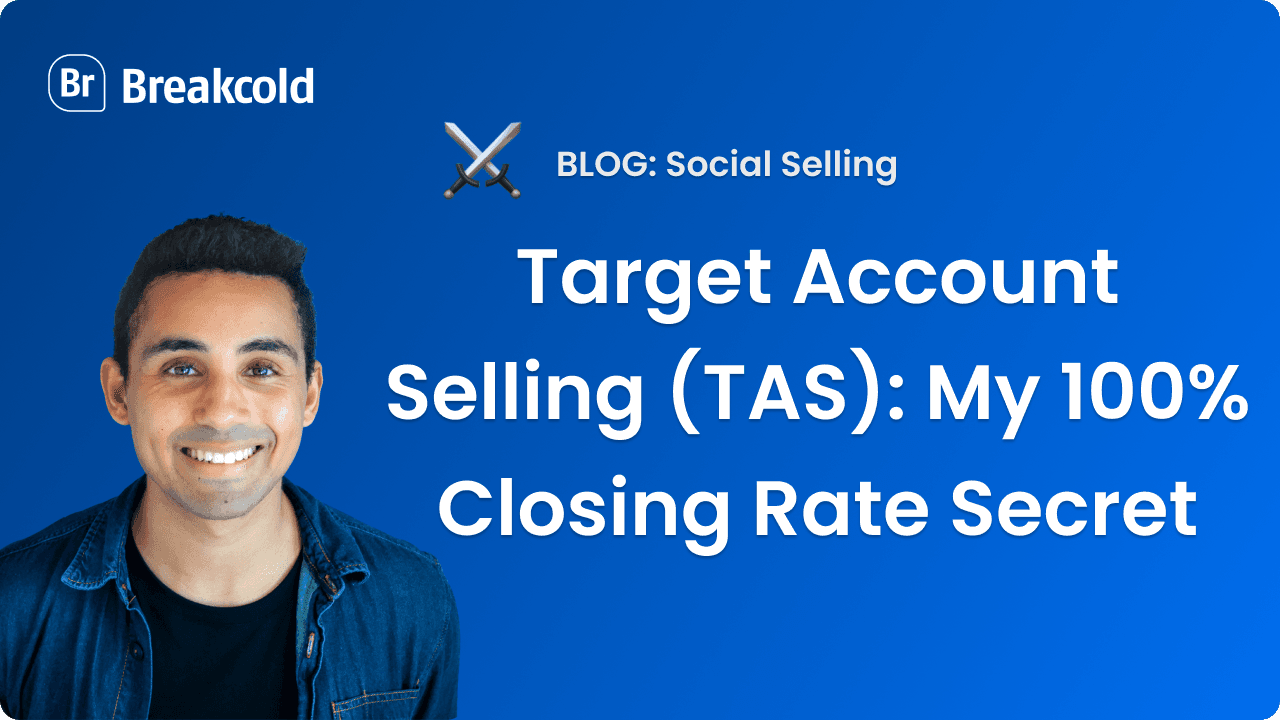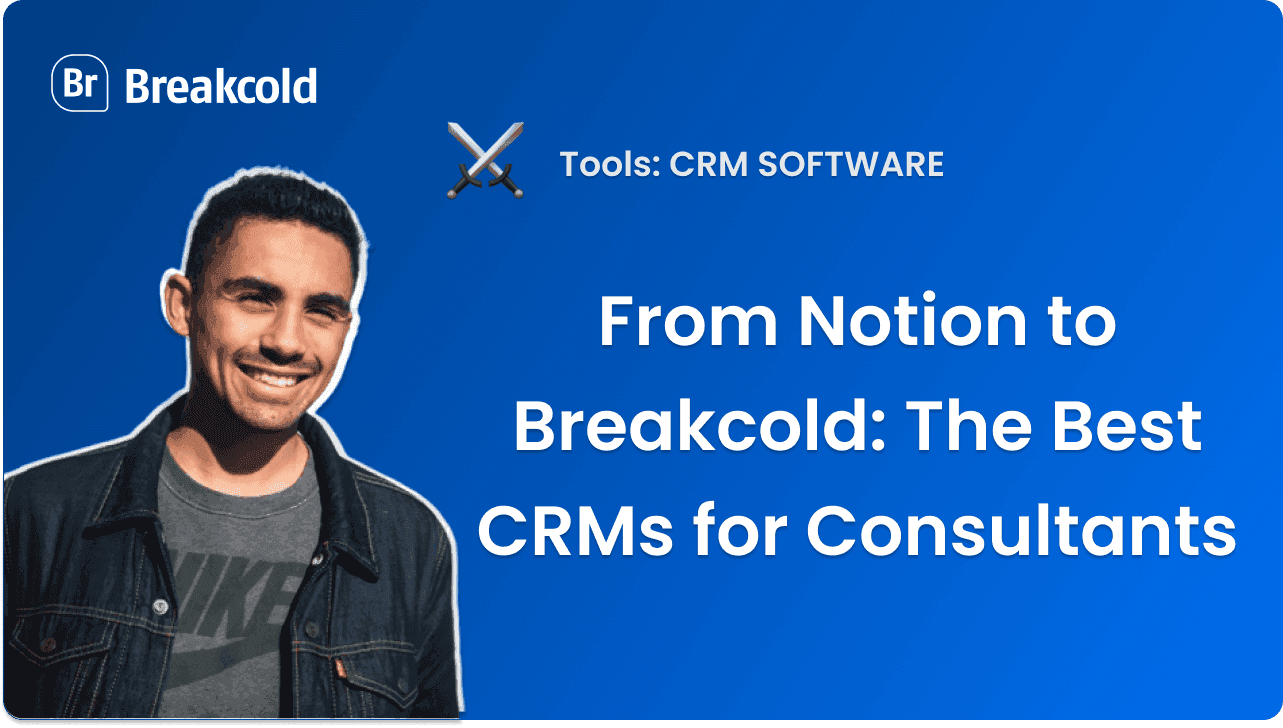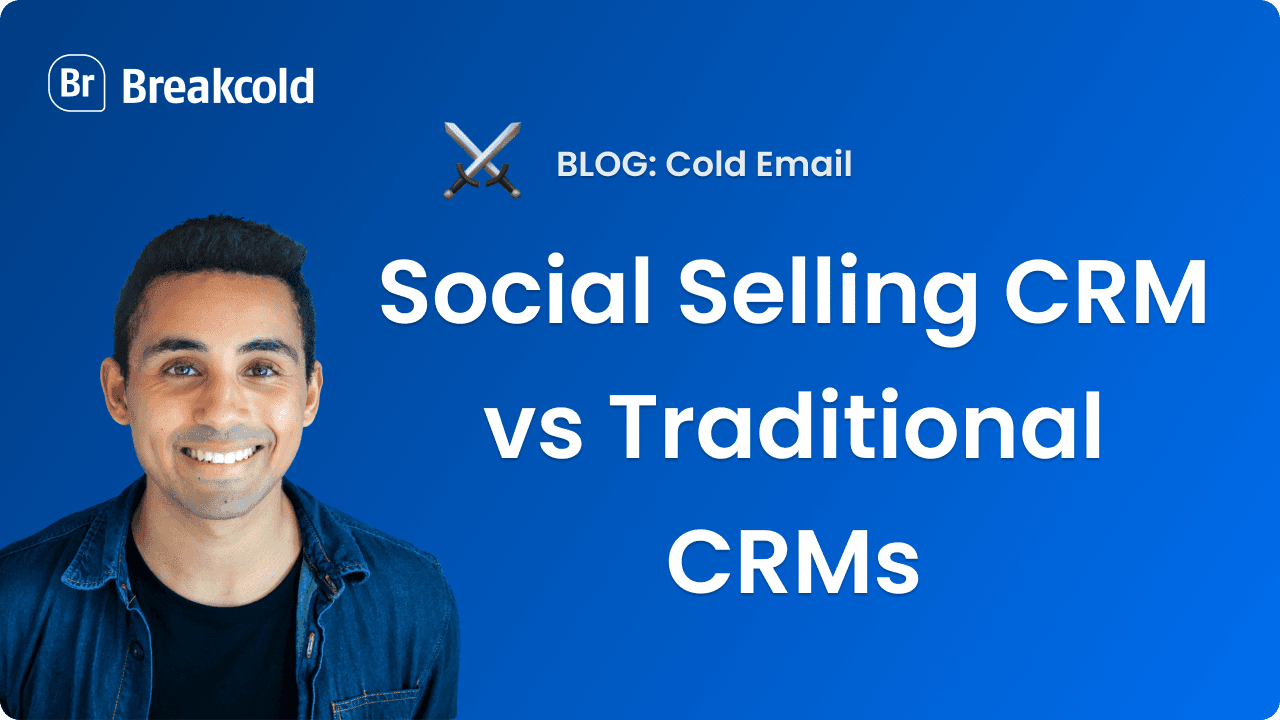
1°) What is a Social Selling CRM?
A Social Selling CRM is the social version of a Sales CRM. It allows you to build relationships faster with prospects on B2B social medias so you can accelerate your sales cycle time.
Some famous current sales CRMs are Close, Pipedrive or Salesforce. Compare to these traditional CRMs, a social selling CRM has social media integrations with LinkedIn or Twitter for example.
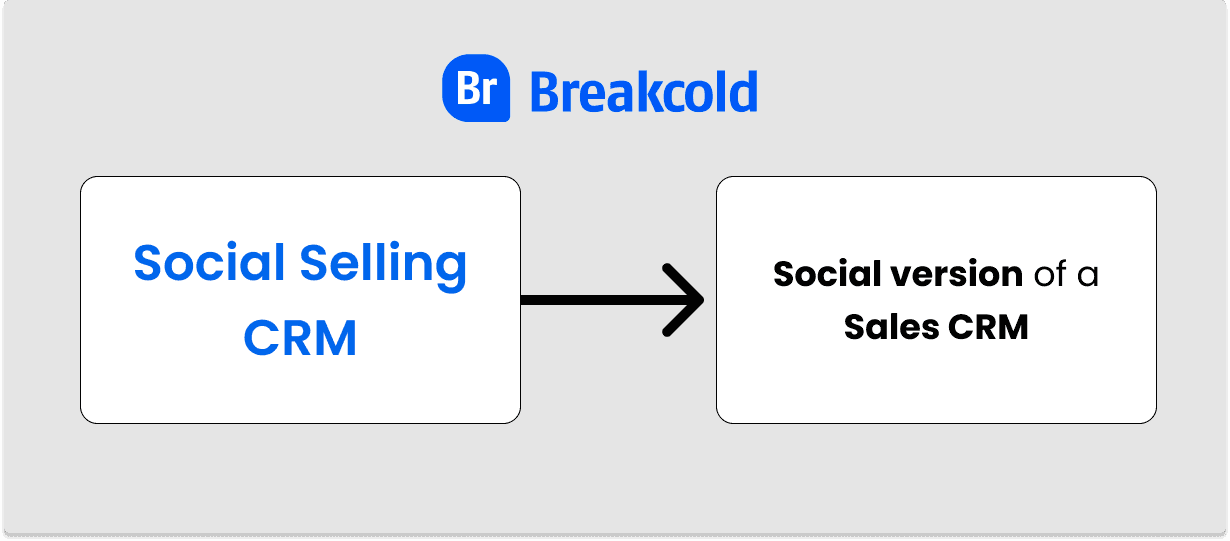
What is a Social Selling CRM?
CRM means Customer Relationship Management. Therefore, the goal of a CRM is to build more relationships with customers, why? Because every salespeople know that the easiest sales are made when you're not selling but when you're building B2B relationships with prospects.
These are the characteristics of a Social Selling CRM:
LinkedIn posts aggregation (from the prospect and it company news)
Tweets aggregation (from the prospect and it company news)
Multi-channel prospecting (LinkedIn/Email/Twitter)
Social selling pipeline
Prospecting feed (also known as a social selling feed)
1/ LinkedIn & Twitter posts aggregation
It's very tedious to engage with prospects on social media because there are so many steps to execute the action. You need to:
type the prospect's name
go to his/her profile
go to the activity tab (if you're on LinkedIn for example)
click on post
see the latest news shared by the prospect and engage
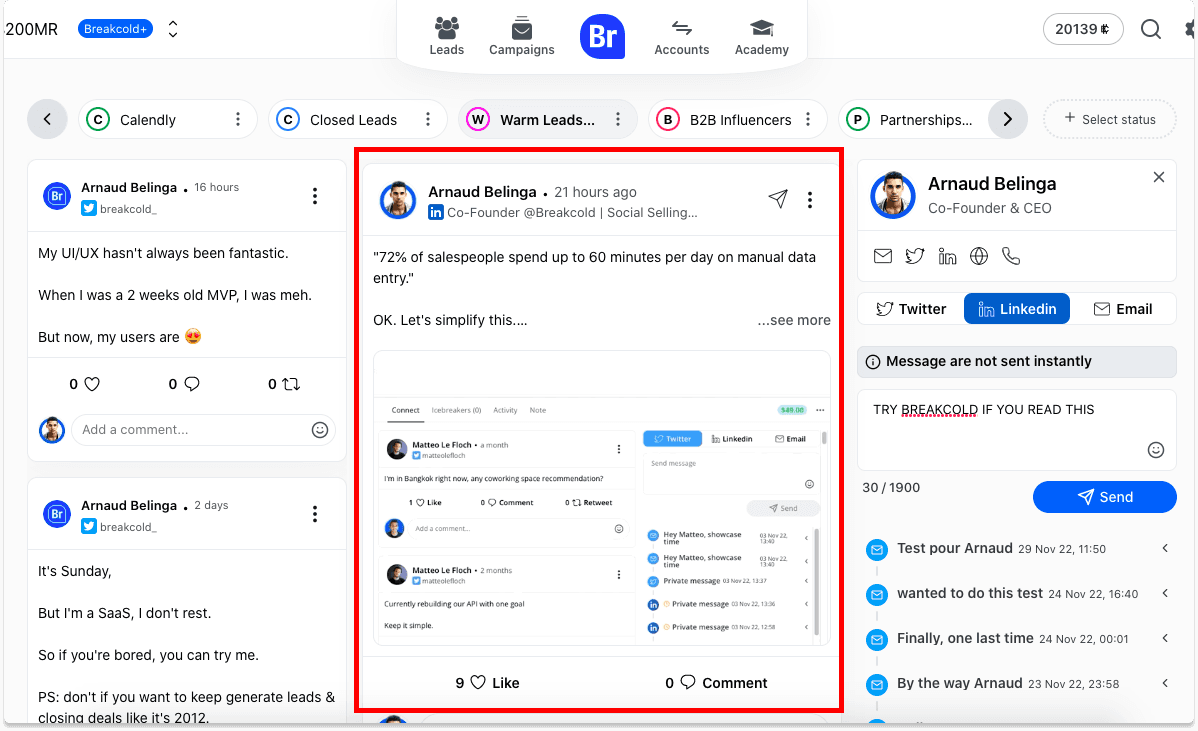
This an example of a LinkedIn post automatically aggregated
Some people streamline the process by adding key prospects as favoritesBold in their google chrome tab. But let's be honest, those kind of processes are not viable at scale.
That's where a social selling CRM save your time and energy by aggregating all the LinkedIn & Twitter posts of your prospects into one place, so you don't have to open a thousand tabs a day.
2/ Multi-channel prospecting
Multi-channel prospecting sounds good in theory: you contact a prospect via cold email, then on LinkedIn and in the between you engage with them on Twitter.
Some softwares allow you to automate the process but sometimes it leads to accounts being banned (LinkedIn doesn't like automation softwares) or results are hard to get unless you're a top Growth Hacker.

You can switch quickly on which channel you want to reach out the prospect
So in the end, the best way would be to carry out the work manually but it's so time consuming that nobody's doing it.
That's why at Breakcold for example we created a simple multi-channel prospecting box to quickly send an email, LinkedIn DM or Twitter DM from one place. Pretty handy right?
3/ Prospecting feed (or social selling feed)
Sales prospecting is not the most enjoyable thing in the world. It's not natural, it just doesn't reflect natural interactions. Do you know what reflects natural interactions? Social media platforms and their feeds system.
That's why we decided to create what we call a prospecting feed, also known as a social selling feed. I'm confident that what we created will be the landmark for the wave of social selling CRM that will come in the coming years.
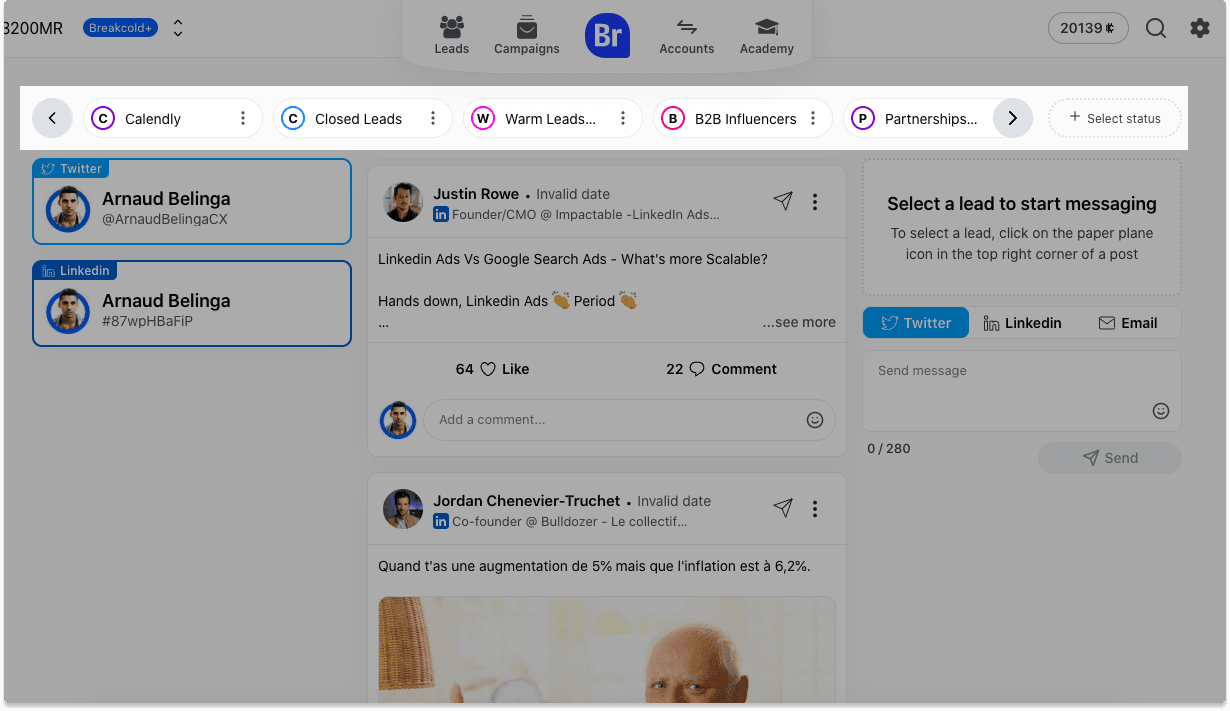
The feed will adapt to the different kind of prospecting lists you built
So what is a prospecting feed?
It's a place connected to your sales pipeline where you can engage and contact multiple prospects all at once.
Th feed will change depending on:
where your prospects are in your sales pipeline
the list you choose
When you decide to contact a prospect, the social selling CRM will aggregate the company news so you can be super precise with your cold outreach.
4/ Social Selling Pipeline
A social selling pipeline refers to what is commonly known as a sales pipeline but with social media integrations.
Let's take an example:
I have a warm prospect one of the last stages of my sales funnel
The contract value of this prospect is $2000/month
I already had a called with him
So my objective now is to close the deal
For that, I'll need to follow-up the lead and to stay of mind

_Click on a prospect, then engage and contact them without leaving your social selling CRM
If I were using a traditional Sales CRM, my only options would be to send a warm email to the prospect or a quick DM on LinkedIn. Both ways takes time because you don't want to be aggressive when doing this kind of follow-ups, you want to build a relationships.
With a social selling pipeline, you can just click on the warm prospect and directly get access to his/her latest news on social media. From there, you can like or comment the post but also shooting a quick message/email in a multi-channel prospecting way.
2°) What are the benefits and disadvantages of a Social Selling CRM?
Benefits of a Social Selling CRM
Benefit 1: you don't need to leave the CRM to engage prospects on social media
I think that's the biggest benefit of a social selling CRM. The time and energy saved is massive. You can just focus on what truly matters: building B2B relationships to generate leads, close deals, retain paying customers and creating word of mouth.

You can like, comment a post and then shooting a message straight away from the same place
Benefit 2: you accelerate your sales cycle time
Sales cycles can be long, especially if your ACV (Annual Contract Value) is high. A social selling CRM will help you accelerate sales cycle time just because you'll bond faster with prospects.
Benefit 3: you can avoid manual data entry on all prospecting channel
Manual data entry is a huge pain point, it reduces your time spent on doing sales prospecting. But not doing it will also result in a decrease in deals closed because data is necessary to take the right decisions over time.
A social selling CRM will help you to synchronize automatically your conversations with prospects.
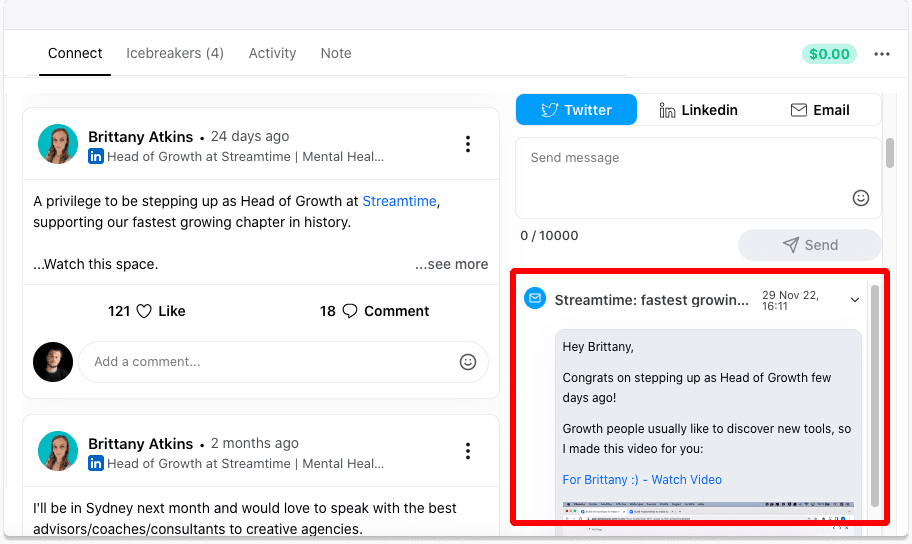
Once you sent a message or an email, all the conversations are saved automatically
Disadvantages of a Social Selling CRM
Disadvantage 1: there is a lack of native integrations or with other softwares (for now)
For now, most social selling CRMs have integrations via Zapier or Make but still don't have proper integrations with traditional CRMs like Hubspot.
Some companies will never move from their CRM but it doesn't mean that they won't use a social selling one.
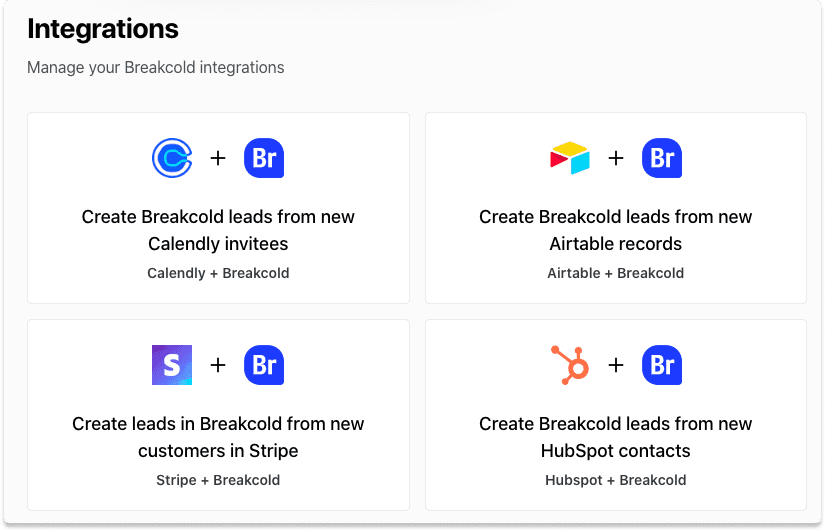
Social Selling CRM examples
Disadvantage 2: cold calling options are limited
As social selling CRMs are focused on generating leads and closing deals with social media, cold calling is not part of the equation. At least for now, I'm guessing that integrations with softwares like Aircall will become a must at some point.
3°) What are the use cases of a Social Selling CRM?
I already covered the use cases of a social selling software in another article so I'll go quick on this.
But basically, with a social selling software you can:
Warm up leads before contacting them (Social Warming)
Hyper-personalize cold emails or cold DMs
Stay top of mind during a deal to win it
Increase retention by bonding with existing clients
Build engagement lists with B2B influencers for key partnerships
Grow a personal brand or company one
1/ B2B Social Warming
The goal of B2B social warming is to engage prospects on social media (likes and comments under their posts) before reaching out or sending a LinkedIn invitation for example. It's a huge booster to get close to a 100% reply rate.
2/ Staying top of mind during a deal to win it
The goal here is to use your social selling software to close deals by interacting with prospects posts after they became warm leads so they become paying customers at some point.
You basically go into their head as the no-brainer first choice to solve their pain point.
3/ Hyper-personalize cold DMs or cold emails
Thanks to data aggregation, you can quickly hyper-personalize cold emails or direct messages at scale without doing a groundwork research on your prospects.
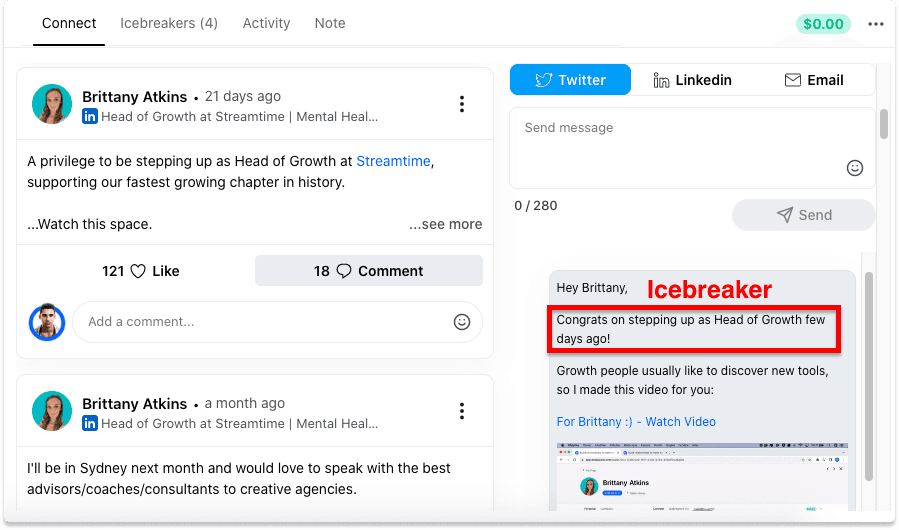
4/ Increase retention by bonding with existing clients
It's not because you closed a deal that they'll stay with you forever. If you want to increase retention and leverage word of mouth, you'll need to build a strong bond with your clients.
That's where a social selling software will help you as well without sending boring automated sequences because you don't have time to track their activity on social media.
5/ Building engagement lists with B2B influencers
You don't contact B2B influencers like that. They reply to more than 200 comments a day, they are drowning in warm and cold DMs.
To get their attention, you'll have to build a true social selling strategy.
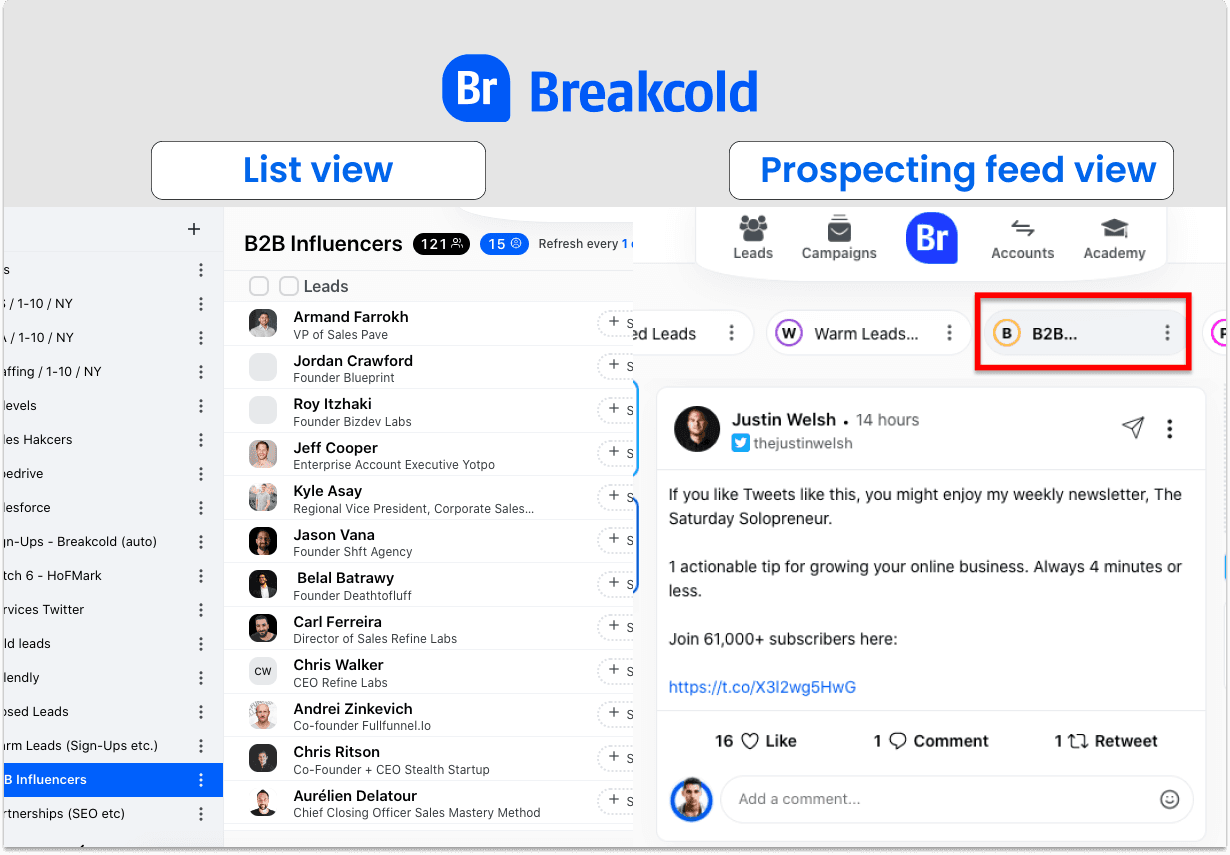
The list view is useful to manage quickly your B2B contacts while the prospecting feed view is designed to build B2B relationships
6/ Grow a personal brand or company one
If you're not into the "selling" part of social selling, namely the sales prospecting part, you can still use a social selling CRM to build and grow a personal brand.

Social selling helped me building a brand on Twitter in just 4 months
4°) Why a Social Selling CRM can replace a traditional Sales CRM?
A social selling CRM can replace a traditional sales CRM because it has all the features of the latter (sales pipeline, follow-up emails, contact management) but with social media integrations on the top.
As this new wave of CRMs is still quite young, they also benefit from being extremely user friendly compare to the big machines that Pipedrive or Salesforce became over the years.
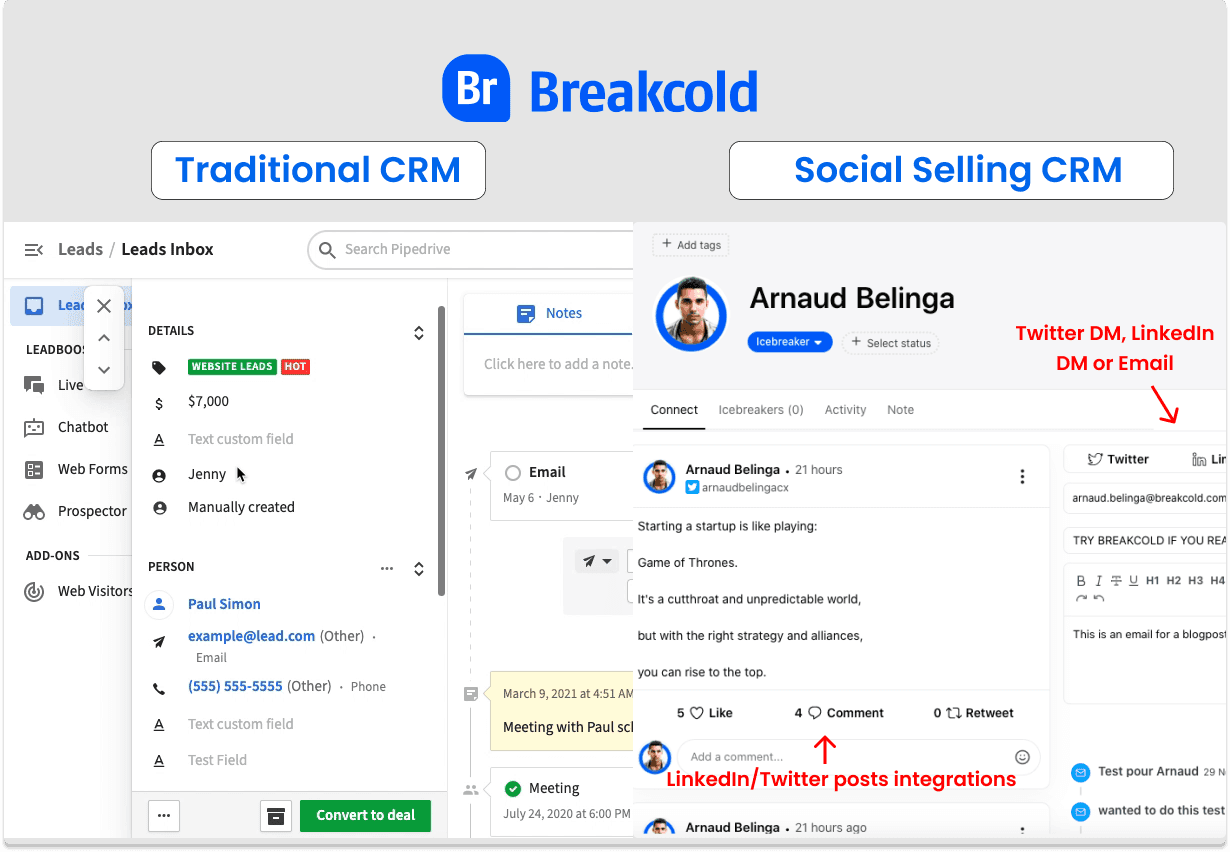
You don't have access to your prospects news in a traditional CRM
After talking with many sales professionals, it appears that most SMBs & Startups don't really use their CRM or at least only use less than 5% of its capacity. So it shows that companies don't need an elaborated CRM to carry out routine sales tasks that bring 80% of the results.
In conclusion, I'd say that if you have a sales team that is under 20 people, a social selling CRM can totally replace a sales CRM.
5°) Who can use a Social Selling CRM?
A social selling CRM can be used by individuals or by teams. Basically, everyone that needs to manage relationships online on B2B social media such as LinkedIn or Twitter should use a social selling CRM.
Generally, a social selling software will mostly be used by sales teams (SDRs, BDRs, AEs) and by early-stage startup co-founder handling the sales part.
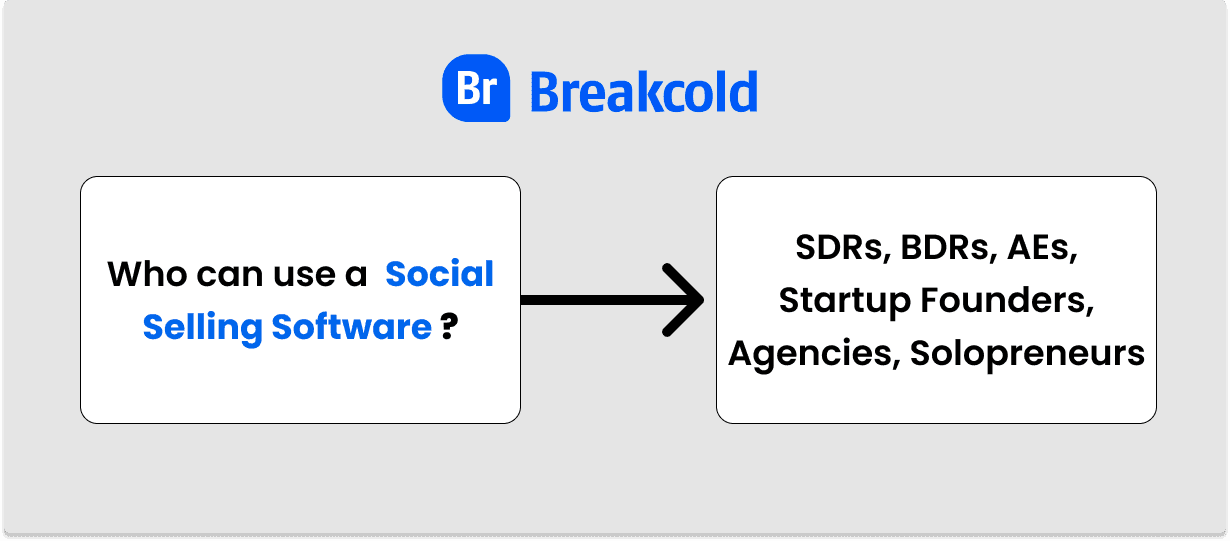
Who can use a Social Selling CRM?
But in practice, marketing teams can also find many use cases in a social selling CRM to facilitate the lead generation and the closing part of a deal for the sales department.




